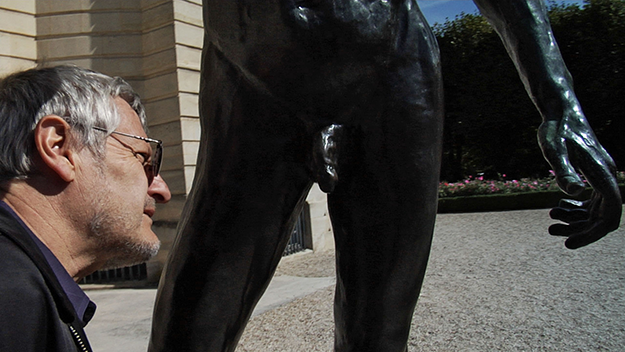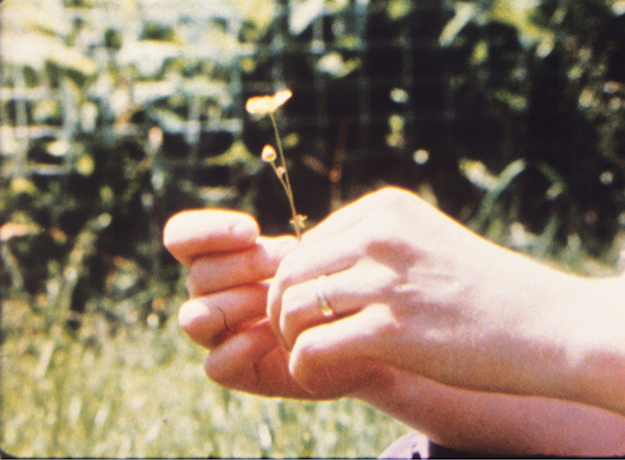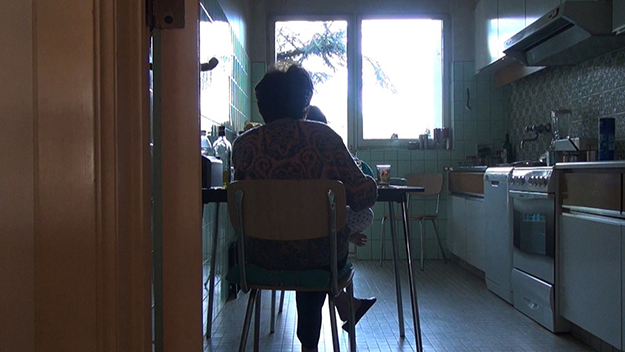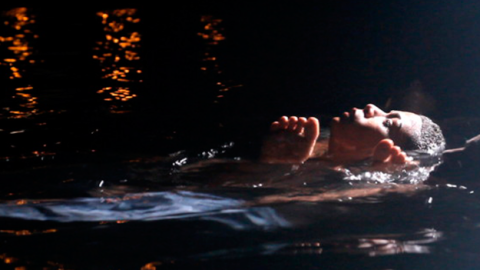Make It Real: On Cinematic Autobiography, Part 1
There was no fine line between what is not film or what is film. And it seemed that he put himself in situations that become the subject of the film. And blood flows in and it becomes part of that scene. And that becomes part of his life. And as it goes along through the years it just seemed to happen like this.
—Michel Auder, The Feature

The Feature
It’s telling that director Michel Auder refers to himself in the third person in this quote from The Feature. He’s referring to events he lived through, but in discussing films he made about and during those events, “I” becomes “he” to match the filmmaking alchemy that transforms an individual into a character. Complicating things further is the fact that The Feature is an avowedly fictional creation stitched together from decades of autobiographical footage, all of which was originally created using that hybridizing alchemy. Auder has been playing himself for a very long time, making the Auder we see on screen both naked (often literally) and invisible.
That many filmmakers use their own lives as source material for nonfiction movies isn’t news, and neither is the notion that doing so can be (and in a sense always is) both a fictionalizing and documenting impulse. But to borrow from Auder’s suitably neither-here-nor-there pidgin dialect, I’m enduringly interested in the different ways that one bleeds into the other, and in the effects and meanings behind those various tributaries. While hybrid filmmaking has received a fair amount of attention in recent years, the same can’t be said of memoirist cinema, which, outside of a brief uptick during the arrival of iMovie and cheap DV (Tarnation), has mostly been absorbed by YouTube’s new and democratic forms.
But between a formidable retrospective series playing now at BAMcinématek, bearing the suitably untidy title Diaries, Notes, and Sketches: Cinematic Autobiography (in which The Feature is featured), and three new movies currently screening at the New York Film Festival, it’s a good moment to consider and appreciate the many varieties of cinematic autobiography. Films like Jonas Mekas’s As I Was Moving Ahead Occasionally I Saw Brief Glimpses of Beauty (00) and Chantal Akerman’s No Home Movie may have a memoirist impulse in common, but their differences largely outweigh any similarities.

As I Was Moving Ahead Occasionally I Saw Brief Glimpses of Beauty
The Mekas film hews to a tradition, pursued during the late Sixties, of personal self-exposure signifying a radical political act. The personal is political, and thus any intimate divulgences carry the implied, and sometimes outright avowed, power of progressivism. And with Mekas, it goes without question that form will match content. As he says via voiceover early in the film, the organizing principle is that there is no organizing principle. Thus his 288-minute film, comprised of material recorded over a 30-year period, has been constructed not thematically or chronologically, but based on the order in which he rediscovered the 16mm reels. (And like the three-hour Auder film, a long duration serves to represent a long chronological span.) Thus, though a lot of the material is very intimate—it’s something like eccentrically shot home movies, heavy on cute kids, cat clips, and wedding pictures—it’s treated as raw material, grist for an experimentalist’s mill. The film plays like a box of photographs overturned, mixed around, and then tossed into the air. Meanwhile the filmmaker’s voiceover, often recorded decades after the footage it accompanies, somewhat undercuts the radical-ness of the randomness by underscoring his purpose. “Disorder. There’s some kind of order in it,” Mekas says. And then, with the studied shambled cadence of his beloved Beats: “Image, sound, memories. Memories. Haha. No judgment here. Positive, negative, rude, bad, they’re just images and sounds—very, very innocent in and by themselves as they pass through. Yes, people are bad. Cinema is innocent. Innocent. People are not innocent. They are not.”
There’s no shortage of philosophical musings in Laurie Anderson’s Heart of a Dog, a valentine to and rumination about the artist’s dear pet Lolabelle. (The film premiered at Venice, is currently screening at NYFF, and will have a theatrical release on October 21.) But where Mekas’s voiceover is purposefully rough and spontaneous-sounding, Anderson’s is deliberately performed, affectedly enunciated, and exactingly produced. Her imagery follows suit. There’s an impressionistic, elliptical, even coy quality to their content and arrangement, but Anderson’s design is far from random. Between a progression of observations about Lolabelle’s life, illness, and absence, and potent diaristic asides about loss, Anderson’s isn’t building toward ratifying her own voice—though she’s ever present on the soundtrack, she’s rarely on screen—but toward understanding and coping with the absence of others. Yes, she’s employing elements of her life to express something about her life, but she’s also using it as a metaphor for things universal and philosophical. While Mekas’s film insists on presence, Anderson’s is preoccupied with absence.
Not dissimilarly, Chantal Akerman’s No Home Movie is haunted by loss, even as the camera fixates on all that can be seen. The filmmaker’s eye is often as fixed as a CCTV camera—on a tripod in her frail mother’s hallway, or on the kitchen table, or steady on her shoulder as it records her laptop screen during a Skype chat. But rather than the perspective of a coldly invasive observer, the camera comes across as a tool of futility, trying to glimpse a ghost before it vanishes forever, before it rejoins all that’s inherently ineffable. When her mother asks why she’s filming their Skype chat, Akerman answers: “Because I want to show how small the world is.” But instead of Mekas’s positivist claims for his art, Akerman’s statement seems to be included ruefully, an idealistic claim otherwise contradicted by every subtly plaintive shot in the film, as well as by the continuation of that very scene, in which a poor Internet connection and her mother’s hearing disability frustrate their communication.

No Home Movie
Akerman shares remarkably candid moments with the audience, such as a conversation about her mother’s experiences in a concentration camp, and later, her mother’s evident physical decline as Akerman and her sister try to lift her spirits and make the best use of their remaining time together. Yet she does so via various distancing tactics, such as placing of the camera outside of the room of action. We’re constantly looking through doorways, around nearly closed doors, out windows, over shoulders. We’re always there, but also never quite there. Yet what it yields isn’t quite intimacy thwarted—it’s closer to a painfully accurate representation of the inherent limitations of intimacy. Bringing us physically closer runs the risk of overestimating the possibility of emotional or spiritual closeness. Akerman’s rarely on screen, and she’s never the focus when she is. Her revelations aren’t about what’s seen, but rather about the complications, frustrations, and integrity of seeing.
As I’ll continue to explore in next week’s column, it’s when filmmakers mine the gap between what can and can’t be seen, between what can and can’t be understood, between the mechanical objectivity of the camera and the subjective gaze of the person managing it, that autobiographical cinema can accomplish and express what other genres can’t. From Ed Pincus’s landmark Diaries (1971-1976) (80) to Manoel de Oliveira’s posthumously released The Visit, or Memories and Confessions (82), the inward gaze can be both revealing and concealing, arrogant and generous, exhibitionist and voyeuristic.
“If you would take my 5,000 or so video hours and deduct from that what my life has been, it could be made in so many different ways and so many different takes could be offered,” Auder says at the outset of The Feature, which is indeed a version of that life as created not by Auder, but by the film’s editor (and Breaking a Monster director) Luke Meyer. “It seems to be real. And is real. And not real.” In a way it’s a game, and sometimes something of a self-serving and self-mythologizing one. But usually things don’t get really interesting until the self-portraitist relinquishes some degree of control—be it to the interventions of a collaborator, the imperfect tools of expression, or the mercilessness of time.





